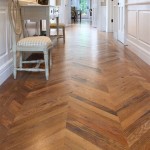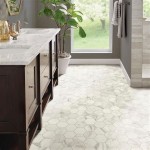How to Repair Laminate Flooring That Is Lifted
Laminate flooring, a popular choice for homeowners due to its affordability and ease of installation, can sometimes exhibit lifting or buckling. This unsightly issue not only detracts from the aesthetic appeal of a room, but can also pose a tripping hazard. Addressing lifted laminate flooring promptly is crucial to prevent further damage and maintain the integrity of the floor. The ability to diagnose and repair the cause of the lifting can potentially save time and money compared to a full flooring replacement.
Understanding the common causes of lifted laminate flooring is the first step towards effective repair. These issues are typically related to moisture, improper installation, or substrate problems. Identifying the root cause will determine the most appropriate repair method and prevent recurrence.
Identifying the Cause of Lifting
Before initiating any repairs, a thorough inspection of the affected area and its surroundings is essential. This involves examining the extent of the lifting, the condition of the laminate planks, and the surrounding environment. Common indicators can help pinpoint the underlying problem. These range from feeling around the area for moisture to testing the flatness of the subfloor with a level or straight edge.
Moisture Exposure: Laminate flooring is particularly susceptible to damage from moisture. Leaks from appliances, plumbing issues, spills that are not promptly cleaned, or excessive humidity can cause the laminate core to swell, leading to lifting. Inspect the area around dishwashers, refrigerators, sinks, and washing machines for any signs of leaks. Check for water stains on the subfloor or along the baseboards. If moisture is suspected, a moisture meter can be used to assess the moisture content of the laminate and the subfloor. High moisture readings confirm the issue, and the source of the moisture must be resolved before any repair attempts are made. Ignoring the moisture source will only lead to the lifted areas returning.
Improper Installation: Mistakes during the initial installation can also contribute to lifting. Insufficient expansion gaps around the perimeter of the room prevent the laminate from expanding and contracting naturally with temperature and humidity changes. This buildup of pressure can cause the planks to buckle and lift. Check the perimeter of the room for adequate expansion gaps, typically around ¼ to ⅜ of an inch. If the gaps are too small or non-existent, the laminate may be tightly compressed against the walls, leading to lifting in the middle of the room. Another aspect of installation is the proper locking of the planks to each other. Gaps forming between planks can allow moisture to penetrate and cause swelling, or create weak points in the floor allowing for lifting.
Subfloor Issues: The subfloor provides the foundation for the laminate flooring. An uneven or unstable subfloor can cause stress on the laminate planks, eventually leading to lifting. Before installing laminate flooring, the subfloor should be level, clean, and dry. Any imperfections, such as bumps, dips, or loose particles, should be addressed. A self-leveling compound can be used to smooth out minor irregularities in the subfloor. Major subfloor issues, such as warped or damaged plywood, may require replacement before installing the laminate flooring. Inspect the subfloor for signs of moisture damage or rot, as this can also compromise the stability of the laminate.
Repairing Minor Lifting
Minor lifting, often caused by slight expansion or contraction, can sometimes be addressed without removing the affected planks. These methods primarily focus on re-securing the laminate to prevent further movement and stabilize the area. For localized issues, these can be quick and effective solutions.
Using Weight and Adhesive: This method is suitable for slight lifting where the laminate plank is still relatively flat and intact. Clean the affected area thoroughly, removing any dirt or debris. Apply a small amount of laminate flooring adhesive to the underside of the lifted plank, being careful not to use excessive adhesive, which can seep out and create a sticky mess. Place a heavy object, such as a stack of books or a weight plate, on top of the lifted area. Ensure the weight is evenly distributed and covered with a protective cloth to prevent scratching the laminate surface. Leave the weight in place for at least 24 hours to allow the adhesive to fully cure. After removing the weight, inspect the area to ensure the laminate is securely bonded to the subfloor.
Tapping Block and Hammer: If the lifting is due to a loose connection between planks, a tapping block and hammer can be used to gently re-engage the locking mechanism. Place the tapping block against the edge of the lifted plank and gently tap it with a hammer. Avoid hitting the laminate directly with the hammer, as this can damage the surface. Work your way along the lifted area, tapping the plank back into place. Use a soft cloth between the tapping block and the laminate to avoid any scuff marks. After tapping, check the area for any gaps or unevenness. If the planks are still not securely locked together, further investigation may be needed to determine if the locking mechanism is damaged.
Seam Fillers: For small gaps or lifting along the seams between planks, seam fillers can provide a temporary solution. These fillers are typically available in colors that match common laminate flooring shades. Apply the seam filler to the gap, using a putty knife or similar tool to smooth it out. Remove any excess filler with a damp cloth. Allow the filler to dry completely according to the manufacturer's instructions. Seam fillers are primarily cosmetic and may not provide a long-term solution if the underlying cause of the lifting is not addressed. These are acceptable solutions to use in low-traffic areas of a room.
Replacing Damaged Laminate Planks
In cases of significant lifting, warping, or water damage, replacing the affected laminate planks may be necessary. This involves carefully removing the damaged planks and installing new ones in their place. The process can be more involved, but results in a more permanent repair. It is important to have spare planks from the original installation for a seamless look. If replacements cannot be found, you may need to replace a larger area of flooring to accommodate a different color or style.
Removing the Damaged Plank: The method for removing a damaged plank depends on its location. For planks along the perimeter, removing the baseboards provides access. For planks in the middle of the floor, a more careful approach is required to avoid damaging surrounding planks. Using a utility knife, carefully score the damaged plank along the seams of all sides. This will help prevent chipping or splintering during removal. Using a chisel or pry bar, carefully pry up the damaged plank, starting from one corner. Work your way around the plank, gradually lifting it from the subfloor. For planks in the middle of the floor, a circular saw can be used to carefully cut out the damaged section, taking care not to cut into the subfloor. After removing the damaged plank, clean the area thoroughly, removing any adhesive residue or debris.
Installing the Replacement Plank: Before installing the replacement plank, ensure it is the correct size and style. Apply a thin layer of laminate flooring adhesive to the subfloor where the replacement plank will be placed. Carefully position the replacement plank in the opening, aligning it with the surrounding planks. Use a tapping block and hammer to gently lock the replacement plank into place. Ensure the seams are flush and the locking mechanism is fully engaged. For planks along the perimeter, reinstall the baseboards to conceal the expansion gaps. Allow the adhesive to dry completely according to the manufacturer's instructions before walking on the repaired area.
Addressing the Expansion Gap: Ensuring proper expansion gaps is crucial to prevent future lifting. After replacing the planks, verify that there is adequate space between the laminate flooring and the walls. If the gaps are insufficient, use a saw or multitool to trim the edges of the laminate flooring to create the necessary space. Cover the expansion gaps with baseboards or quarter-round molding to provide a finished look.
By carefully identifying the cause of the lifting and using the appropriate repair techniques, homeowners can effectively address lifted laminate flooring and restore the beauty and functionality of their floors. Prevention, through diligent maintenance and addressing moisture issues promptly, remains the best strategy for maintaining the longevity of laminate flooring.

How To Fix A Bent Or Raised Up Edge On Your Luxury Vinyl Plank Flooring

How To Repair Laminate Flooring Quickly

What To Do When Your Laminate Floors Are Raising Flooring Liquidators

Lifting Laminate Flooring Repair Diy How Fix Replace Boards Damaged Floor Pet

Simple Guide On How To Fix Laminate Flooring That Is Lifting

How To Fix Laminate Flooring That Is Lifting

What To Do When Your Laminate Floors Are Raising Flooring Liquidators

How To Repair Laminate Flooring The Home Depot

Wow Lifting Bouncing Laminate Flooring Fix Expansion Problem Xdiy

How To Repair Laminate Flooring The Home Depot
Related Posts








